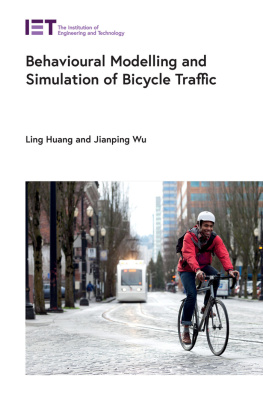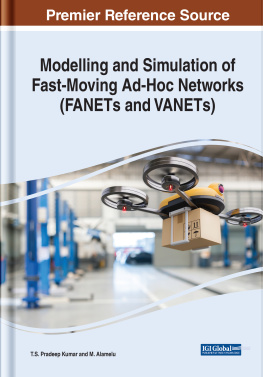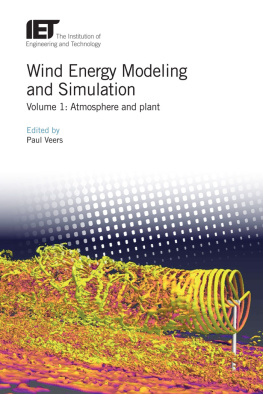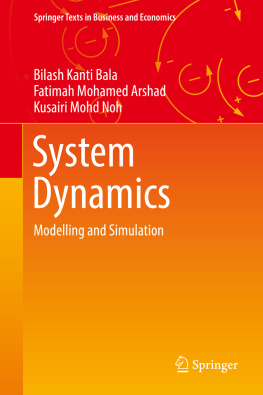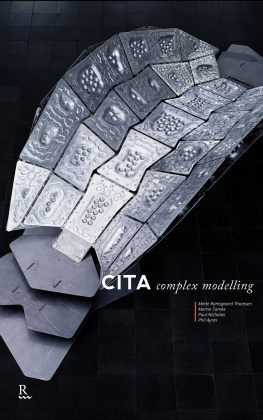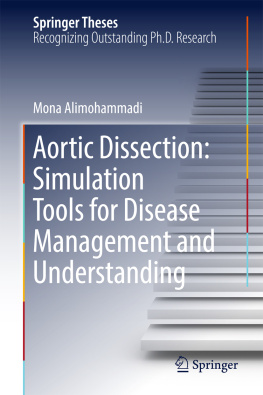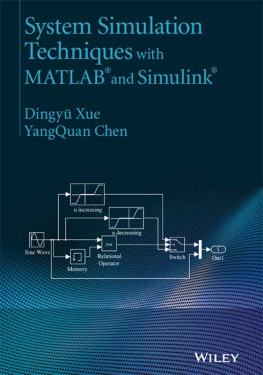Huang Ling - Behavioural Modelling and Simulation of Bicycle Traffic
Here you can read online Huang Ling - Behavioural Modelling and Simulation of Bicycle Traffic full text of the book (entire story) in english for free. Download pdf and epub, get meaning, cover and reviews about this ebook. year: 2021, publisher: Institution of Engineering & Technology, genre: Politics. Description of the work, (preface) as well as reviews are available. Best literature library LitArk.com created for fans of good reading and offers a wide selection of genres:
Romance novel
Science fiction
Adventure
Detective
Science
History
Home and family
Prose
Art
Politics
Computer
Non-fiction
Religion
Business
Children
Humor
Choose a favorite category and find really read worthwhile books. Enjoy immersion in the world of imagination, feel the emotions of the characters or learn something new for yourself, make an fascinating discovery.
- Book:Behavioural Modelling and Simulation of Bicycle Traffic
- Author:
- Publisher:Institution of Engineering & Technology
- Genre:
- Year:2021
- Rating:4 / 5
- Favourites:Add to favourites
- Your mark:
- 80
- 1
- 2
- 3
- 4
- 5
Behavioural Modelling and Simulation of Bicycle Traffic: summary, description and annotation
We offer to read an annotation, description, summary or preface (depends on what the author of the book "Behavioural Modelling and Simulation of Bicycle Traffic" wrote himself). If you haven't found the necessary information about the book — write in the comments, we will try to find it.
Huang Ling: author's other books
Who wrote Behavioural Modelling and Simulation of Bicycle Traffic? Find out the surname, the name of the author of the book and a list of all author's works by series.
Behavioural Modelling and Simulation of Bicycle Traffic — read online for free the complete book (whole text) full work
Below is the text of the book, divided by pages. System saving the place of the last page read, allows you to conveniently read the book "Behavioural Modelling and Simulation of Bicycle Traffic" online for free, without having to search again every time where you left off. Put a bookmark, and you can go to the page where you finished reading at any time.
Font size:
Interval:
Bookmark:
IET TRANSPORTATION SERIES 23
Behavioral Modeling and Simulation of Bicycle Traffic
Ling Huang and Jianping Wu
The Institution of Engineering and Technology
Published by The Institution of Engineering and Technology, London, United Kingdom
The Institution of Engineering and Technology is registered as a Charity in England & Wales (no. 211014) and Scotland (no. SC038698).
The Institution of Engineering and Technology 2021
First published 2021
This publication is copyright under the Berne Convention and the Universal Copyright Convention. All rights reserved. Apart from any fair dealing for the purposes of research or private study, or criticism or review, as permitted under the Copyright, Designs and Patents Act 1988, this publication may be reproduced, stored or transmitted, in any form or by any means, only with the prior permission in writing of the publishers, or in the case of reprographic reproduction in accordance with the terms of licences issued by the Copyright Licensing Agency. Enquiries concerning reproduction outside those terms should be sent to the publisher at the undermentioned address:
The Institution of Engineering and Technology
Michael Faraday House
Six Hills Way, Stevenage
Herts, SG1 2AY United Kingdom
www.theiet.org
While the authors and publisher believe that the information and guidance given in this work are correct, all parties must rely upon their own skill and judgement when making use of them. Neither the authors nor publisher assumes any liability to anyone for any loss or damage caused by any error or omission in the work, whether such an error or omission is the result of negligence or any other cause. Any and all such liability is disclaimed.
The moral rights of the authors to be identified as authors of this work have been asserted by them in accordance with the Copyright, Designs and Patents Act 1988.
British Library Cataloguing in Publication Data
A catalogue record for this product is available from the British Library
ISBN 978-1-78561-951-9 (hardback)
ISBN 978-1-78561-952-6 (PDF)
Typeset in India by MPS Limited
Printed in the UK by CPI Group (UK) Ltd, Croydon
Other related titles
| Volume 1 | Clean Mobility and Intelligent Transport Systems M. Fiorini and J.-C. Lin (Editors) |
| Volume 2 | Energy Systems for Electric and Hybrid Vehicles K.T. Chau (Editor) |
| Volume 5 | Sliding Mode Control of Vehicle Dynamics A. Ferrara (Editor) |
| Volume 6 | Low Carbon Mobility for Future Cities: Principles and applications H. Dia (Editor) |
| Volume 7 | Evaluation of Intelligent Road Transportation Systems: Methods and results M. Lu (Editor) |
| Volume 8 | Road Pricing: Technologies, economics and acceptability J. Walker (Editor) |
| Volume 9 | Autonomous Decentralized Systems and Their Applications in Transport and Infrastructure K. Mori (Editor) |
| Volume 11 | Navigation and Control of Autonomous Marine Vehicles S. Sharma and B. Subudhi (Editors) |
| Volume 12 | EMC and Functional Safety of Automotive Electronics K. Borgeest |
| Volume 16 | ICT for Electric Vehicle Integration with the Smart Grid N. Kishor and J. Fraile-Ardanuy (Editors) |
| Volume 17 | Smart Sensing for Traffic Monitoring N. Ozaki (Editor) |
| Volume 18 | Collection and Delivery of Traffic and Travel Information P. Burton and A. Stevens (Editors) |
| Volume 25 | Cooperative Intelligent Transport Systems: Towards high-level automated driving M. Lu (Editor) |
| Volume 26 | Traffic Information and Control R. Li and Z. He (Editors) |
| Volume 30 | ICT Solutions and Digitalisation in Ports and Shipping M. Fiorini and N. Gupta |
| Volume 38 | The Electric Car M.H. Westbrook |
| Volume 45 | Propulsion Systems for Hybrid Vehicles J. Miller |
| Volume 79 | Vehicle-to-Grid: Linking electric vehicles to the smart grid J. Lu and J. Hossain (Editors) |
Ling Huang, PhD is an associate professor in the School of Civil Engineering and Transportation at South China University of Technology, China. She is also a member of Traffic Modeling and Simulation Professional Committee of China. Her research interests include cyclist behavior, bicycle sharing system, traffic simulation, behavior analysis, driving behavior, pedestrian, computer vision and traffic simulation applications.
Jianping Wu, PhD is a professor in the School of Civil Engineering at Tsinghua University, China, and director of the Future Transport Research Centre of Tsinghua University, the University of Cambridge, Massachusetts Institute of Technology. He is associate editor of IET ITS, a fellow of the IET, member of the Environment and Engineering Committee (CEE) of the WFEO, executive director of the China Association of Simulation, and Cheung Kong Scholar Professor of the Ministry Education of China.
Section bicycle individual riding characteristics
Bicycles, also known as a bike or a cycle, are usually small two-wheeled land vehicles. After people get on the bicycle, they pedal as the power. Thus, a bicycle is a green, healthy and environment-friendly means of transportation. is the typical bicycle. There are many kinds of bicycles, including single bicycle, double bicycle and multi-person bicycle.
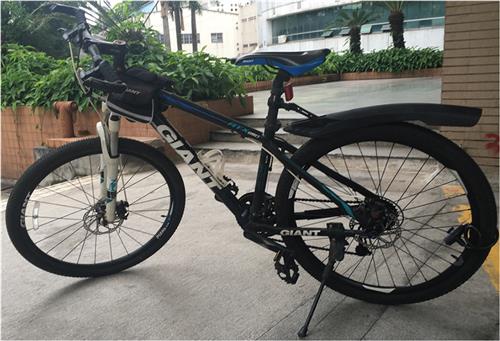
Figure 1.1 Typical bicycle (GIANT bicycle)
Bicycles can be used as environment-friendly vehicles for walking and traveling.
More and more people use bicycles as fitness equipment for cycling exercise and bicycle travel. Cycling itself is also a sport. There are road bicycle race, mountain bicycle race, field bicycle race, acrobatic bicycle race and so on.
Although kinds of bicycles are mentioned earlier, the bicycle traffic discussed in this book is the ordinary bicycles for commute trips. Cycling is a kind of flexible, portable and relatively low-speed traffic mode. The power of bicycle is generated by human body, so it is not suitable for long-distance travel.
The advantages of bicycle traffic include mobility, flexibility, economy and environmental friendliness (occupying small road area, no air pollution, etc.). Bicycle traffic plays an important role in urban transportation in developing countries, such as China.
In recent years, with the increasingly prominent environmental problems, bicycle traffic has become more and more valued as a green, flexible and efficient alternative traffic mode in developed countries with dispersed residence and developed motor vehicles.
From the road area occupied by a vehicle, a running bicycle with a speed of 15 km/h occupies a road area of 8 m2, while a car at the same speed occupies a road area of 50 m2, more than six times that of a bicycle. In fact, the average number of people in a car is far less than six.
Therefore, compared with motor vehicles, bicycle traffic has higher road efficiency.
As the microscopic dynamic characteristics of bicycles are quite different from those of motor vehicles, following we will introduce some unique bicycle microscopic riding characteristics.
Font size:
Interval:
Bookmark:
Similar books «Behavioural Modelling and Simulation of Bicycle Traffic»
Look at similar books to Behavioural Modelling and Simulation of Bicycle Traffic. We have selected literature similar in name and meaning in the hope of providing readers with more options to find new, interesting, not yet read works.
Discussion, reviews of the book Behavioural Modelling and Simulation of Bicycle Traffic and just readers' own opinions. Leave your comments, write what you think about the work, its meaning or the main characters. Specify what exactly you liked and what you didn't like, and why you think so.

